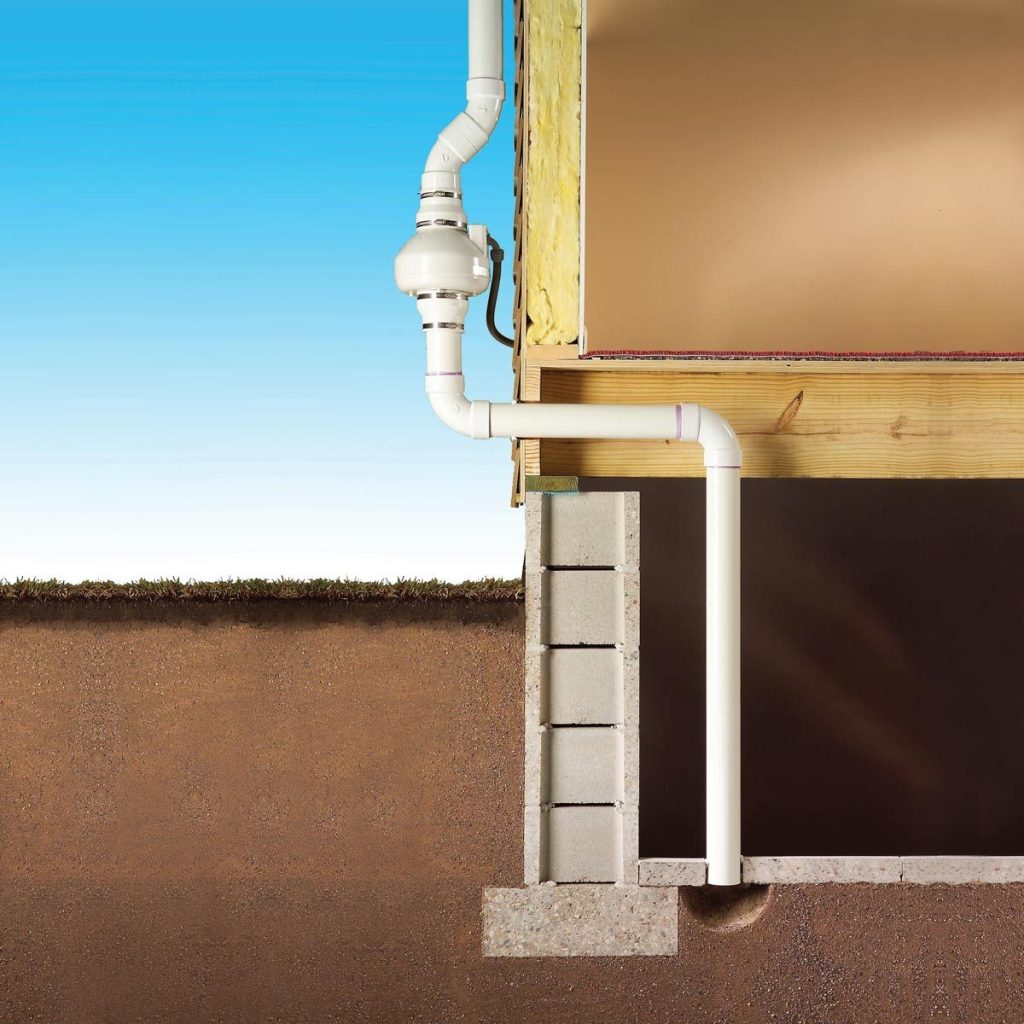Service
RADON TESTING & MITIGATION
Why You Need Radon Mitigation Services
Radon Testing &
Mitigation

How Radon Enters Your Home
As a hazardous, odorless gas that cannot be detected through sight or smell, it’s impossible to discover radon in the home without professional radon testing. In fact, if radon lingers in the home for an excessive period of time, you can potentially put yourself in harm’s way.
Radon enters the home through the following areas:
- Crawlspaces
- Cracks in the foundation & walls
- Floor drains
- Pipes
- Sump pumps
Radon gas can enter both old and new homes, regardless if there are visible cracks or not. In fact, your neighbor’s brand new home could have radon levels exceeding 4pCi/L while yours is 2.7pCi/L or vice versa. Homes which sit side-by-side can have completely different radon levels, so it’s critical to test for radon.
Radon in Well Water
Not as common as radon in air, radon can also enter the home through the use of well water. Areas that have high levels of uranium in the underlying granite or shale are prone to allowing radon enter the groundwater. When high levels of radon are found in your private well, you can potentially be exposed to radon poisoning by inhaling the water vapor when showering, washing dishes or doing the laundry. While the risk of lung cancer from breathing in radon in the air is much higher, it’s crucial to test your well water.
The most common methods of removing radon from your water are granular activated carbon (GAC) and aeration, which has been designated by the U.S. EPA as “the best available technology.” When you get in touch with our radon contractor, he or she will discuss which option is best for you.
Radon Health Risks
Radon is the #1 environmental hazard in the U.S. and the 2nd leading cause of lung cancer deaths in the country. An estimated 21,000 lung cancer deaths annually are due to radon poisoning.
How Does Radon Lead to Lung Cancer?
When high levels of radon gas are released into the air and then inhaled, tiny radioactive particles can lodge in the lining of the lungs, where they can damage or kill lung cells. This process, in turn, can cause lung cancer. Although smokers are 10 times more likely to develop radon-related lung cancer, radon causes a substantial number – nearly 3,000 – of lung cancer deaths among non-smokers in the United States.
Who Else is Affected by Radon Poisoning?
Smokers should be especially cautious of radon as they are 25 times more likely to develop lung cancer than non-smokers.
Children are, unfortunately, more susceptible to radon-induced cancer. According to the U.S. Agency for Toxic Substances and Disease Registry, children exposed to radon may be at almost twice the risk as adults. If children are exposed to radon and to tobacco smoke, their risk of getting lung cancer is at least 20 times higher.
The American Lung Association says that many people with early stage lung cancer don’t have symptoms. When symptoms are present, they are different in each person, which is why it is important to see your doctor if you experience any of these symptoms:
- A cough that doesn’t go away and gets worse over time
- A chronic cough or “smoker’s cough”
- Hoarseness
- Constant chest pain
- Shortness of breath or wheezing
- Frequent lung infections such as bronchitis or pneumonia
- Coughing up blood
Radon has been classified as a Class A human carcinogen based on research founded by the U.S. Environmental Protection Agency (EPA), the World Health Organization, the National Academy of Sciences, and the US Department of Health and Human Services. (See Radon Health Studies).
CALL US
1-877-373-9084

